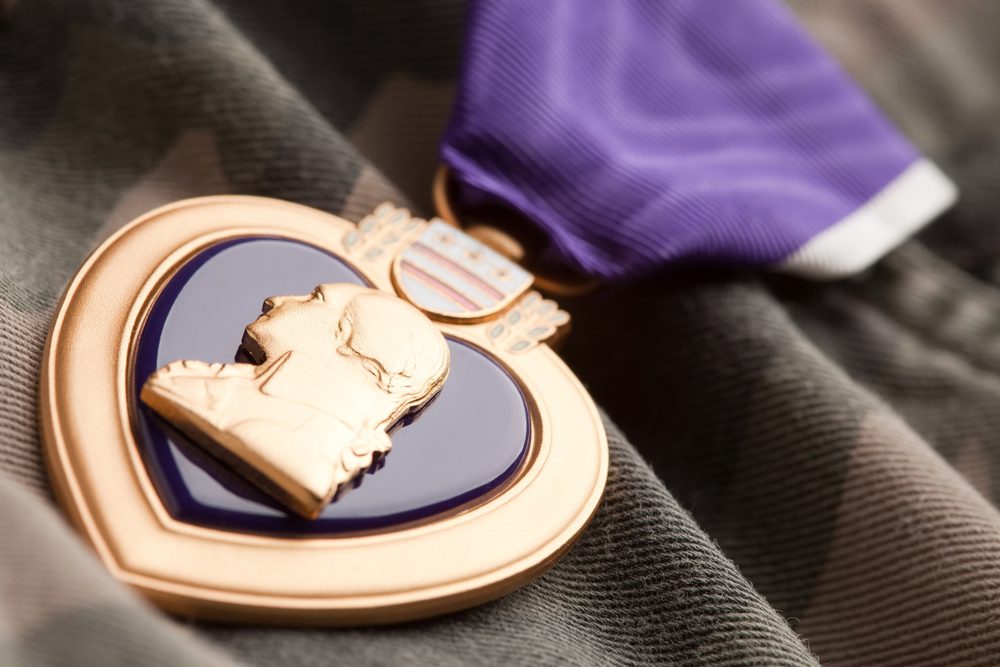Each year on August 7th, the United States commemorates Purple Heart Day, a day of observance dedicated to the brave men and women who have been wounded or killed while serving their country.
These courageous individuals are recognized by the Purple Heart Medal, a distinguished decoration often displayed alongside thin ribbons on military uniforms. Here are the key facts about this day and how to observe it properly.
Understanding Purple Heart Day
Purple Heart Day is a time of remembrance and acknowledgment in the United States. This commemoration pays tribute to the recipients of the Purple Heart Medal, a decoration awarded to military personnel who were wounded or killed while serving the nation.
In contrast to many other holidays, Purple Heart Day isn’t a public holiday. Instead, it’s a day of observance. This means businesses and schools remain open, and public transport continues to run as usual. However, it is a day of profound significance intended to honor and recognize the sacrifices of brave individuals who’ve served the U.S. military.
History and Significance of Purple Heart Day
The Purple Heart’s history traces back to the Revolutionary War, when General George Washington created the Badge of Military Merit on August 7, 1782. Embroidered in purple cloth and the shape of a heart, the decoration was the precursor to the Purple Heart. It was meant to acknowledge merit and bravery in the face of enemy action.
The Purple Heart as we know it was established on February 22, 1932, marking the 200th anniversary of Washington’s birth. It is notably distinguished by a purple, heart-shaped medal framed by gold, bearing a bust of Washington and his coat of arms.
The significance of Purple Heart Day is deeply rooted in American history. It honors those who were wounded or lost their lives in service to the nation, shedding light on the sacrifices made by these individuals and their families. Observing Purple Heart Day reminds us of the courage, devotion, and selflessness exhibited by those in uniform.
Observing Purple Heart Day
Observing Purple Heart Day varies from community to community, but it often includes remembrance ceremonies, local events, and personal acts of respect. Many choose to visit war memorials, military museums, or veteran cemeteries, offering flowers and taking moments of silence to honor the fallen and wounded.
Local veterans’ organizations often host events on this day, which may include speeches, parades, or charity events to support veterans and their families. Additionally, it’s common to see social media campaigns encouraging users to share stories of Purple Heart recipients, fostering a greater understanding of the award and those who’ve earned it.
Supporting Purple Heart Recipients and Their Families
Beyond observing Purple Heart Day, there are ways to show ongoing support to Purple Heart recipients and their families. Volunteering at local veterans’ hospitals or donating to charities that aid veterans and their families are significant gestures. These actions can include offering job resources or providing educational scholarships for veterans and their dependents.
You might also consider advocating for policy changes that benefit veterans, such as improved healthcare services or better housing assistance programs. Lastly, simply expressing gratitude to a veteran, whether a Purple Heart recipient or not, can profoundly impact. Letting these brave individuals know they are valued and appreciated is a meaningful step in honoring their service.
Purple Heart Day is more than a date on the calendar; it’s a reminder of the selfless acts of courage by men and women in uniform. By acknowledging their sacrifices and showing our support, we pay tribute to their bravery and honor their memory.
Promoting Public Awareness of Purple Heart Day
An essential aspect of observing Purple Heart Day is raising public awareness. Despite the day’s significance, it’s often overlooked compared to more widely recognized holidays like Veterans Day or Memorial Day.
Advocating for increased awareness can involve educating others about the Purple Heart’s history and meaning, sharing posts on social media, and encouraging local media to cover Purple Heart Day events and stories.
Educational institutions can play a significant role in this effort by incorporating lessons about Purple Heart Day into their curriculum around August 7th. This education can help the younger generation understand the sacrifices made by veterans and cultivate greater respect for those who have served.
Purple Heart Day as a Moment of National Unity
The Purple Heart is a visual testament to their sacrifice, courage, and dedication. On this special day, we pause to remember their valor, reflect on the significance of their service, and express our gratitude for the sacrifices made to defend our nation.

